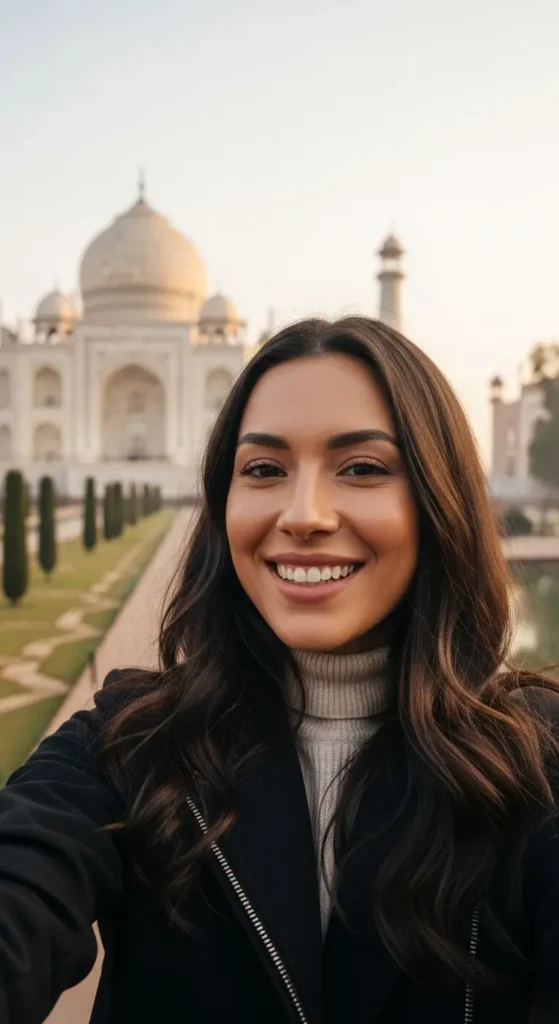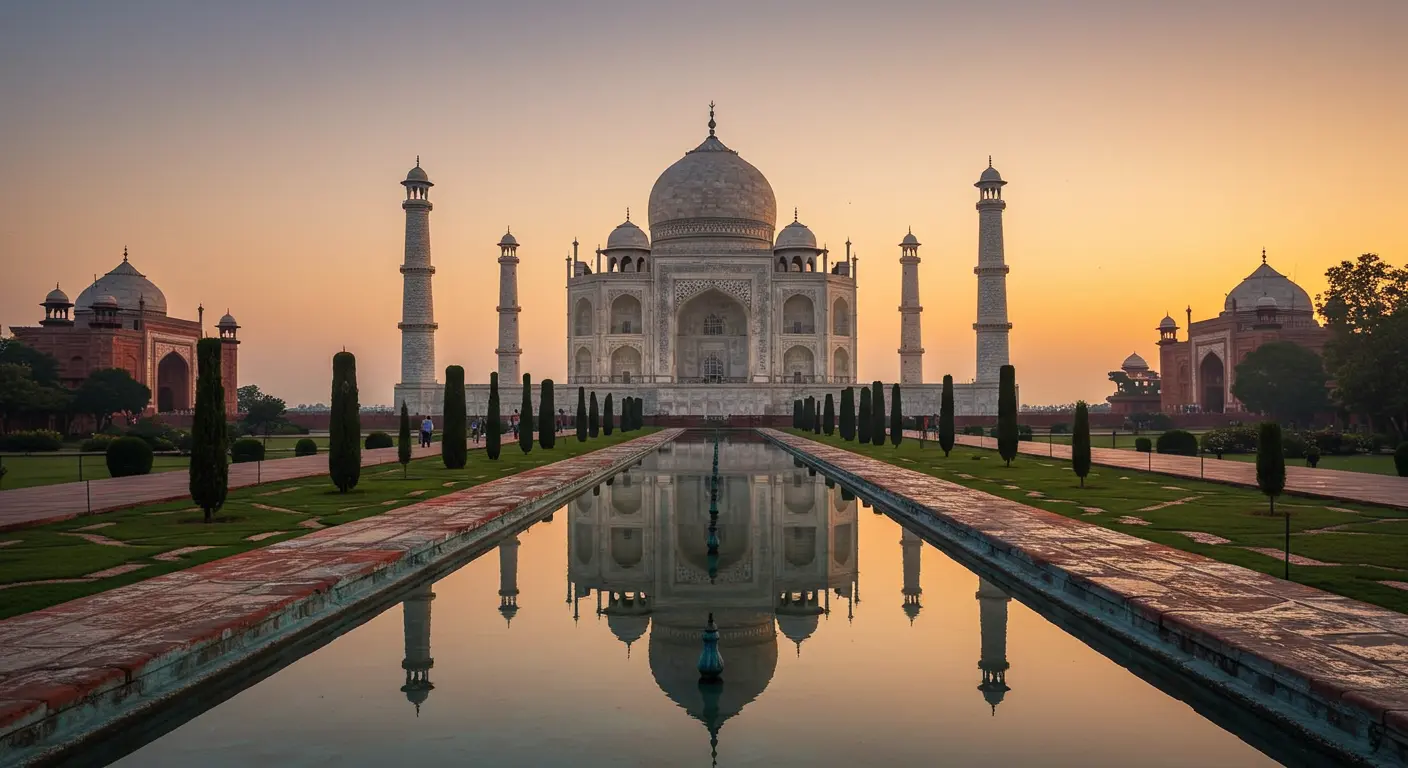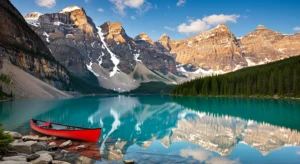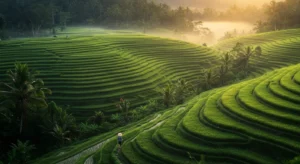Table of Contents
Your First India Vacation: A Beginner’s Guide to the Adventure of a Lifetime
Let me guess. You’ve seen the photos. The majestic Taj Mahal at sunrise. The vibrant, swirling saris in a bustling market. The serene backwaters of Kerala are dotted with houseboats. The idea of an India vacation has been ticking over in your mind, a dream filled with color, flavor, and ancient history.
But then… a little whisper of doubt creeps in. Is it too chaotic? Too overwhelming for a first-time visitor? How do you even begin to plan for a country that’s essentially a continent, with dozens of cultures and languages?
If that sounds familiar, take a deep breath. You’re not alone. Every seasoned traveler to India was once a beginner, wide-eyed and a little nervous. And every single one of them will tell you it was worth it. India isn’t just a destination; it’s a feeling. It’s an experience that recalibrates your senses and stays with you long after you’ve returned home.
This guide is your friendly first step. We’re going to strip away the overwhelm and replace it with a clear, exciting roadmap for your first incredible journey to India.
Why India? More Than Just a Trip
An India vacation is less of a holiday and more of a pilgrimage for the soul. It’s a country that operates on its own rhythm, a beautiful, chaotic symphony of sights, sounds, and smells. One moment you’re navigating the energetic streets of Old Delhi, and a few hours later, you’re finding absolute peace watching the Ganges flow by in Rishikesh.
It’s the place where you’ll taste a simple street food snack that will ruin all other food for you (in the best way possible). It’s where you’ll witness staggering wealth and heartbreaking poverty, often on the same street, forcing you to reflect on your own place in the world. It’s challenging, yes, but it’s also profoundly rewarding. You don’t just see India; you feel it.
Crafting Your First India Itinerary: Where to Even Start?
With so much to see, the biggest challenge is choosing where to go. For your first trip, it’s wise not to try and conquer the entire subcontinent. Focus on one or two regions to truly soak in the experience without spending your entire vacation on a train.
The Classic Introduction: The Golden Triangle
This is the quintessential first-timer’s route for a reason. It packs three incredibly diverse and iconic destinations into a neat, manageable loop, usually covered in 7-10 days.
- Delhi: Your likely entry point. Don’t just rush through! The capital is a tale of two cities. Explore the majestic history of Old Delhi—a labyrinth of narrow lanes, the aromatic spice market, and the majestic Jama Masjid. Then, contrast it with the wide, tree-lined avenues and imperial architecture of New Delhi, including the India Gate and Rashtrapati Bhavan.
- Agra: Home to the crown jewel, the Taj Mahal. No photo can prepare you for its serene, breathtaking beauty. Go at sunrise to see the marble glow. While you’re there, don’t miss the imposing Agra Fort, a UNESCO World Heritage site that tells a story of Mughal power and passion.
- Jaipur: The vibrant “Pink City” of Rajasthan. Get lost in the fairy-tale grandeur of the Amber Fort, gaze at the bizarre and fascinating Hawa Mahal (Palace of Winds), and dive into the chaos of the Johari Bazaar for some souvenir shopping.
Beyond the Triangle: Other Incredible Pathways
If you have more time or want a different vibe, consider these:
- The Soulful South: For a greener, more relaxed pace, head south. Cruise the palm-fringed Kerala Backwaters on a traditional houseboat. Explore the serene tea plantations of Munnar. Unwind on the beaches of Goa or discover the rich cultural heritage and delicious filter coffee of Tamil Nadu.
- The Spiritual Heartland: If you’re seeking peace and spirituality, the north is your haven. Rishikesh, the “Yoga Capital of the World,” nestled in the foothills of the Himalayas along the Ganges, is a transformative place. Further upstream, Varanasi is one of the oldest continually inhabited cities on Earth—an intense, profound, and unforgettable spiritual experience.
Navigating the Practicalities: Your India Travel Toolkit
This is where a little preparation goes a long way in ensuring a smooth trip.
Getting Your Visa and Documents
Most foreign nationals need a visa to enter India. The process is almost entirely online now through the official e-Visa India portal. It’s relatively straightforward—just apply at least a week before your travel, and have digital copies of your passport photo and passport page ready. Also, consult your doctor about recommended vaccinations well in advance.
When to Visit: Chasing the Perfect Weather
India has three main seasons, and timing is everything.
- Winter (October to March): This is the peak season for a reason. The weather is pleasant and dry across most of the country, making it ideal for sightseeing. This is the perfect time for your Golden Triangle trip.
- Summer (April to June): It gets hot. Especially in the north. Unless you’re heading to the Himalayan hill stations, this can be a very uncomfortable time for travel.
- Monsoon (July to September): The rains bring lush, green landscapes, but they can also disrupt travel plans. The southwest monsoon drenches the west coast, while the northeast monsoon affects the east coast.
Getting Around: Trains, Planes, and Automobiles
- Trains: Traveling by train is a classic Indian experience. For long distances, book your tickets in advance through the IRCTC website or a trusted travel agent. Opt for AC classes (like AC 2-tier or AC 3-tier) for comfort on overnight journeys.
- Flights: For covering large distances quickly (e.g., Delhi to Goa), domestic flights are affordable and efficient.
- Taxis & Drivers: For a first-time visitor, hiring a car and driver for a multi-city tour (like the Golden Triangle) is a fantastic investment. It gives you incredible flexibility, local insight, and a stress-free way to travel between cities.
Embracing the Culture: It’s All Part of the Adventure
The “culture shock” is real, but it’s also the most rewarding part.
- A Note on Food: Indian food is a universe of its own. To avoid the infamous “Delhi Belly,” start slow. Stick to bottled water, avoid street food that looks like it’s been sitting out, and maybe give the infamous street-side paani puri a miss on your first few days. Eat at busy, reputable-looking restaurants. And don’t be afraid to try the regional specialties—your taste buds will thank you.
- Dress Modestly: India is a conservative country. Dressing respectfully will not only help you blend in but also save you from unwanted attention. For everyone, covering shoulders and knees is a good rule of thumb, especially when visiting temples and mosques.
- The Art of the Head Wiggle: You’ll see it everywhere. That charming, ambiguous side-to-side head wobble. It can mean “yes,” “maybe,” “I understand,” or “hello.” Don’t overthink it; just embrace the quirk.
My most vivid memory of my first trip wasn’t at a famous monument. It was in a small village, sipping sweet, milky chai from a clay cup at a roadside stall. The owner and I didn’t share a language, but we shared smiles and a moment of genuine human connection. That’s the magic of India. It’s in the grand gestures of its history and the quiet, unexpected moments in between.
India Vacation FAQs: Your Quick Questions, Answered
Q: Is India safe for solo female travelers?
A: Yes, it can be, but it requires extra vigilance. Dress conservatively, avoid walking alone in isolated areas at night, and trust your instincts. Many women have incredible, safe journeys by planning ahead and being aware of their surroundings.
Q: How much should I budget for a two-week trip?
A: India can cater to any budget. A comfortable, mid-range experience (nice hotels, private car with driver, good meals) for two weeks could range from $1,500 to $3,000 per person, excluding international flights. Backpackers can do it for much less, while luxury travel has no upper limit.
Q: What is the one thing I absolutely must pack?
A: Besides your passport and common sense? A sturdy pair of shoes you can easily slip on and off (for temple visits) and a good power bank. Power outages can happen, and you’ll be taking a lot of photos!
Q: I’m a vegetarian. Will I find good food?
A: You’ve hit the jackpot! India is a vegetarian’s paradise. A huge portion of the population is vegetarian for religious or cultural reasons, so you’ll find an incredible variety of delicious and authentic vegetarian dishes everywhere you go.
Q: Can I use my credit card, or is it a cash-based society?
A: Major hotels, restaurants, and shops in cities accept cards. However, for local markets, street food, auto-rickshaws, and smaller establishments, cash (Indian Rupees) is king. It’s best to have a mix of both.
The Adventure Awaits
So, there you have it. Your India vacation is no longer a distant, intimidating dream—it’s a tangible, achievable plan. It’s a land that will challenge you, delight you, and ultimately, change you. The chaos is just organized chaos, and once you lean into it, you’ll discover a rhythm and a warmth that is uniquely India.
Start planning, get that visa, and pack your bags. The adventure of a lifetime is calling.
For the most up-to-date official travel information, including visa requirements and safety advisories, always check the Incredible India official website and your government’s travel advisory page before you go.




